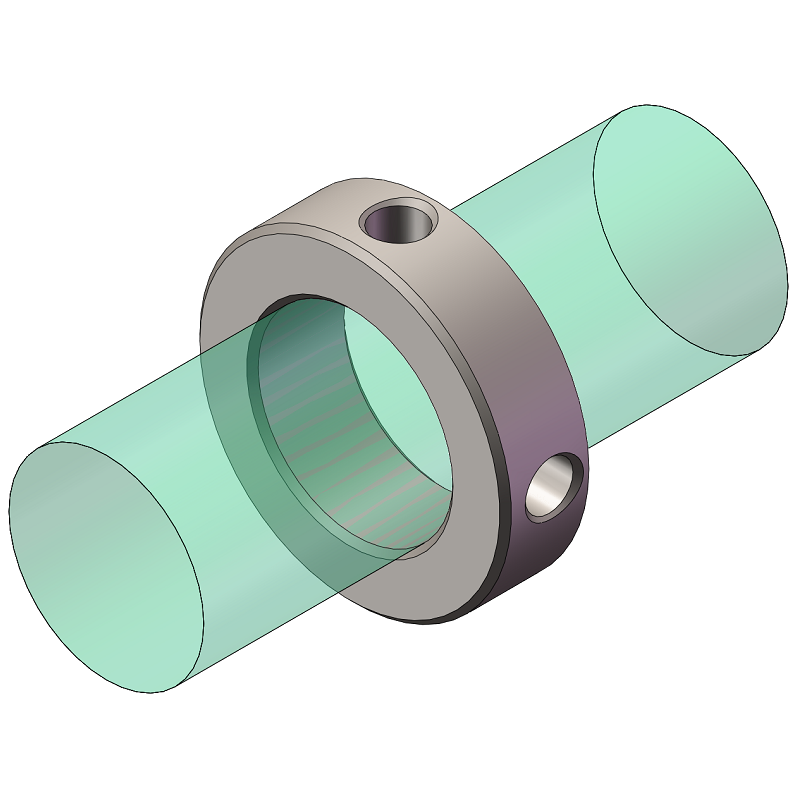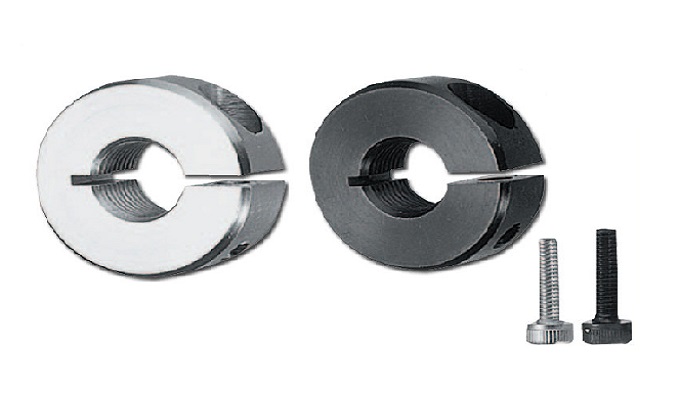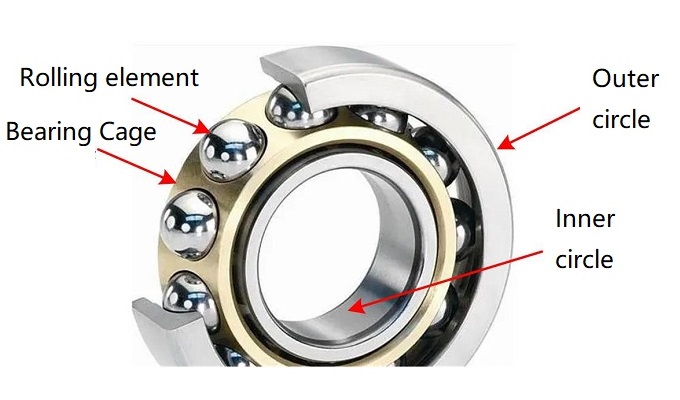Introduction
Injection molding is a manufacturing process where molten material is injected into a mold cavity under high pressure to produce a wide range of products. This process is widely used in various industries due to its ability to produce complex shapes and high volumes of parts efficiently and cost-effectively.
Precision alignment is critical in injection molding as it ensures that the mold halves are accurately aligned during the injection process. This helps to produce high-quality products with consistent dimensions and tolerances. Any misalignment can lead to defects, such as warping, sink marks, and flashing, compromising the product's integrity and affecting its performance.
Locating rings plays a crucial role in achieving precision alignment in injection molding. These rings locate and align the mold halves during assembly and injection. They provide a precise and repeatable reference point for the mold halves, ensuring they are correctly aligned and remain in place during molding.
Types of Locating Rings for Injection Molding
Several types of locating rings are used in injection molding, including standard locating rings, floating locating rings, and self-centering locating rings.
Standard locating rings are the most commonly used type, typically made of steel or tungsten carbide. They have a precise diameter and length and are used to locate the mold halves in a fixed position during assembly and injection. Standard locating rings offer high accuracy and repeatability but may require additional components for alignment.
Floating locating rings are designed to allow some movement between the mold halves during assembly and injection. They are typically used in larger molds or those with uneven thermal expansion to prevent stress and distortion. Floating rings are more forgiving than standard locating rings but may compromise precision and accuracy.
Self-centering locating rings have a spring mechanism allowing them to automatically center the mold halves. They are useful in molds with many cavities or complex geometries that require quick and easy alignment. Self-centering locating rings provide high accuracy and speed but can be more expensive than other types.
The type of locating ring chosen depends on the application's requirements and the molding process's specific needs. For example, standard locating rings are suitable for simple molds with few cavities and little variation. Self-centering locating rings are more appropriate for larger, more complex molds with many cavities.

The advantages and disadvantages of each type of locating ring
Standard locating rings:
Advantages:
◆Offer high accuracy and repeatability.
◆Generally less expensive than other types.
◆Suitable for simple molds with few cavities and little variation.
Disadvantages:
●It may require additional components for alignment.
●Limited flexibility in terms of accommodating mold misalignment or wear.
Floating locating rings:
Advantages:
◆Allow some movement between mold halves to prevent stress and distortion.
◆More forgiving than standard locating rings.
◆Suitable for larger molds or those with uneven thermal expansion.
Disadvantages:
●May compromise precision and accuracy.
●It can require additional components for proper alignment.
Self-centering locating rings:
Advantages:
◆Provide high accuracy and speed in aligning the mold halves.
◆Suitable for molds with a high number of cavities or complex geometries.
◆Require no additional components for alignment.
Disadvantages:
●Generally more expensive than other types of locating rings.
●May not be suitable for all types of molds, such as those with uneven thermal expansion or limited space.
Overall, each type of locating ring has advantages and disadvantages, and the choice will depend on the specific needs and requirements of the molding process.
Applications for each type of locating ring
Standard locating rings:
Applications:
◆Simple molds with few cavities and little variation.
◆Small to medium-sized molds that require high accuracy and repeatability.
◆Molds with limited space for additional components.
Floating locating rings:
Applications:
◆Large molds or those with uneven thermal expansion that requires some flexibility.
◆Molds that require a degree of forgiveness to accommodate mold wear or misalignment.
◆Molds that require additional components for alignment, such as slide locks or lifters.
Self-centering locating rings:
Applications:
◆Molds with a high number of cavities that require quick and easy alignment.
◆Complex molds with irregular geometries that require precision alignment.
◆Molds with limited space for additional components or those that require a simplified design.
In general, the choice of locating ring type will depend on the specific needs and requirements of the molding process. Each type of locating ring has advantages and disadvantages, and the selection will depend on factors such as mold size, complexity, and required accuracy.


Factors to Consider When Choosing Locating Rings in injection molding
Several factors must be considered when locating rings for injection molding to ensure optimal performance and durability.
Dimensional accuracy and tolerance requirements:
Locating rings must be designed to meet the mold's dimensional accuracy and tolerance requirements to ensure precision alignment. Choosing a ring with the correct diameter and length is critical for achieving the desired level of accuracy.
Material selection:
The material used for the locating ring can significantly impact its performance and durability. Common materials for locating rings include steel, tungsten carbide, and ceramic. Steel is durable and cost-effective but may not be suitable for high-temperature or corrosive environments. Tungsten carbide is more expensive but offers superior wear resistance and hardness. Ceramics are also highly wear-resistant and can withstand high temperatures and corrosive environments, but it is brittle and more expensive.
Coatings and finishes:
Applying coatings or finishes to the surface of the locating ring can improve its performance and durability. For example, a PVD coating can increase wear resistance and reduce friction, while a DLC coating can improve corrosion resistance and reduce mold release.
Factors to consider when choosing a specific type of locating ring
The specific needs and requirements of the molding process will determine the type of locating ring required. Factors to consider include:
- The size and complexity of the mold
- The number of cavities
- The level of precision required
For example, a self-centering locating ring may suit a mold with many cavities or complex geometry. In contrast, a standard locating ring may be suitable for a smaller, simpler mold.
In summary, selecting the right locating ring for injection molding involves considering a range of factors, including dimensional accuracy, material selection, coatings and finishes, and specific process requirements. By carefully considering these factors, manufacturers can ensure that their molds achieve the required level of precision alignment and produce high-quality products.
Achieving precision alignment by locating rings
Locating rings plays a critical role in achieving precision alignment in injection molding. By providing a reference point for the mold components, locating rings ensures that the mold cavity and core are aligned accurately, minimizing the risk of dimensional inaccuracies and defects in the final product.
Using locating rings offers several benefits in terms of product quality and consistency. By ensuring precise alignment, locating rings can help to minimize part-to-part variation and reduce the need for post-processing operations. This can result in higher yields, faster cycle times, and lower costs.

Examples of how locating rings work to achieve precision alignment include
Standard locating rings fit into a machined cavity in the mold base and provide a precise reference point for the mold components. This ensures accurate alignment of the cavity and core during the molding process.
Floating locating rings allow for movement between the cavity and core, accommodating any variation in thermal expansion or mold wear. This can help to maintain accuracy over time and reduce the risk of defects.
Self-centering locating rings use a spring mechanism to center the mold components and provide quick and easy alignment. This can be particularly useful for molds with many cavities or complex geometries.
In summary, locating rings is essential in achieving precision alignment in injection molding. Providing a reference point for the mold components ensures that the cavity and core are accurately aligned, resulting in high-quality products with minimal variation.
Maintenance and Care of Locating Rings
To ensure optimal performance and longevity of locating rings in injection molding, following best practices for maintenance and care is essential. This includes:
Proper cleaning and lubrication:
Regular cleaning and lubrication of locating rings are essential to prevent damage or wear. This involves removing debris or contamination from the ring's surface and applying a suitable lubricant to reduce friction and wear.
Regular inspection and replacement:
Regular inspection of locating rings is essential to identify any signs of damage or wear that may impact their performance. This includes checking for any signs of deformation, cracks, or corrosion. If any issues are identified, replacing the locating rings is essential to avoid any impact on the molding process.
Best practices for ensuring longevity and optimal performance:


Several best practices can help to ensure the longevity and optimal performance of locating rings. These include:
It is important to store locating rings properly to prevent any damage or contamination. Additionally, regular cleaning and maintenance are necessary to prevent corrosion and wear.
We ensure the locating ring is properly installed and securely fastened in the mold.
We are using appropriate lubricants and coatings to reduce friction and wear.
We select locating rings made from durable materials such as tungsten carbide or ceramic for high-wear or high-temperature applications.
In summary, proper maintenance and care are essential for the longevity and optimal performance of locating rings in injection molding. This includes regular cleaning and lubrication, inspection and replacement, and following best practices for storage and installation. By taking these steps, manufacturers can ensure that their locating rings continue to perform effectively and deliver high-quality products over the long term.
In Conclusion
In conclusion, locating rings is essential in achieving precision alignment in injection molding. Providing a reference point for the mold components ensures that the cavity and core are accurately aligned, resulting in high-quality products with minimal variation.
Manufacturers should consider dimensional accuracy and tolerance requirements, material selection, coatings and finishes, and specific application requirements when selecting and locating rings. Proper maintenance and care are also essential for ensuring the longevity and optimal performance of locating rings, including regular cleaning and lubrication, inspection and replacement, and following best practices for storage and installation.
In summary, by selecting the appropriate locating rings and following best practices for maintenance and care, manufacturers can optimize the use of these critical components and achieve consistent, high-quality results in injection molding.




